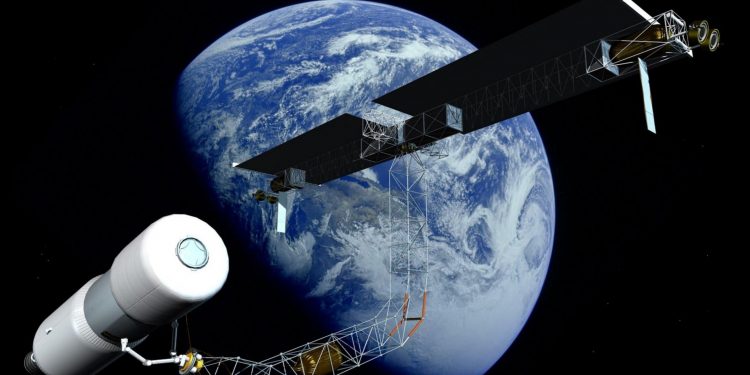The 2020 State of the Space Industrial Base Workshop held in May brought together more than 120 space leaders from across the federal government, industry, and academia to assess the current health of the space industry and to provide recommendations for strengthening that industrial base.
The State of the Space Industrial Base 2020 report was prepared by space leaders from the U.S. Space Force, Air Force Research Laboratory, and Defense Innovation Unit to summarize the virtual conference.
The world stands at the threshold of a new era in space. Much of the foundation of this exciting era is American made, and much of the innovation powering it is born of American creativity and ingenuity. Other nations, however, are challenging the US for leadership of this next space age.
Success in this long-term strategic competition requires that the US seamlessly integrate multiple elements of national power. This report provides US policymakers and industry leaders comprehensive recommendations on the path forward to address the growing threats to US space power and how to ensure a strong US space industrial base as a foundation to US space leadership.
Going beyond “admiring the problem,” this report documents the next higher level of analysis of the challenge, focusing on specific actions the US must undertake to maintain security in space. The report clearly delineates the state of the space industrial base, its challenges and issues, and provides six overarching recommendations to US policymakers and four overarching recommendations to space industry leaders.
It further provides detailed analysis of sub-areas of the space industrial base and areas affecting the base, specifying 39 actions as to what must be done, who must do them, and the timeframe in which they must be accomplished.
Consistent with the National Defense Strategy (NDS), it provides recommendations of how the Department of Defense (DoD) can integrate with the interagency to employ all dimensions of national power, and how it can create a 21st century national security innovation base that advances our security and economic strength. In June 2020, the new Defense Space Strategy (DSS) identified multiple lines of effort for US defense and military competitive advantage over foreign adversaries.
This report operationalizes the DSS lines of effort by offering the next level of strategic analysis and required actions. In July 2020, the National Space Council outlined its strategy for “low Earth orbit (LEO) commercialization, robotic and human exploration, national security capabilities, and international cooperation for science, safety, security, and economic growth” and the need for a “whole-of-government approach to [US] space activities.”
The findings and recommendations are the collective wisdom of over 120 space leaders from across government, industry and academia who assembled for the “State of the US Space Industrial Base 2020 Conference and Workshop,” hosted by New Space New Mexico between 4-7 May 2020.
This effort draws on and culminates three prior workshops to assist development of a comprehensive unified civil, commercial and national security space strategy for “maintaining and advancing United States dominance and strategic leadership in space.”
This report does not constitute an advocacy position of 5 the sponsoring agencies, or US government endorsement, recommendation, or favoring, but accurately documents the findings and recommendations of the conference.
The conference sponsors, the United States Space Force (USSF), the Defense Innovation Unit (DIU), and the United States Air Force Research Laboratory (AFRL), organized the workshop around the six areas vital to overall US national space power and the US space industrial base, and the areas most likely to be centers of gravity in great power competition:
- Space policy and finance tools to secure US space leadership now and into the future by building a unity-of-effort and incentivizing the space industrial base.
- Space information services include space communications/internet, positioning, navigation and timing (PNT), and the full range of Earth observing functions which have commercial, civil and military applications.
- Space transportation and logistics to, in and from cislunar space and beyond.
- Human presence in space for exploration, space tourism, space manufacturing and resource extraction.
- Power for space systems to enable the full range of emerging space applications.
- Space manufacturing and resource extraction for terrestrial and in space markets.
- For each area, the participants analyzed its current state, challenges, and inflection points and, based on that analysis, developed focused recommendations, consistent with national space policy as to:
- US government policy and actions to maintain and expand the US space industrial base required for national security needs.
- Whole-of-government policies and actions to guarantee the US space industrial base for a future with space as a major contributor to US national power.
- Immediate actions to preserve and expand the US space industrial base in light of the disruption by the Coronavirus Disease 2019 (COVID-19) pandemic.
From these efforts, the working groups and sponsoring organizations identified the specific actions necessary to address the challenges identified in each area. These are summarized in the report. In addition, they identified the most important actions for government and industry that cut across these areas. These actions lie at the nexus of shared interests of the DoD, whole-of-government, and the broader industrial base.
Read Full Report in PDF format











